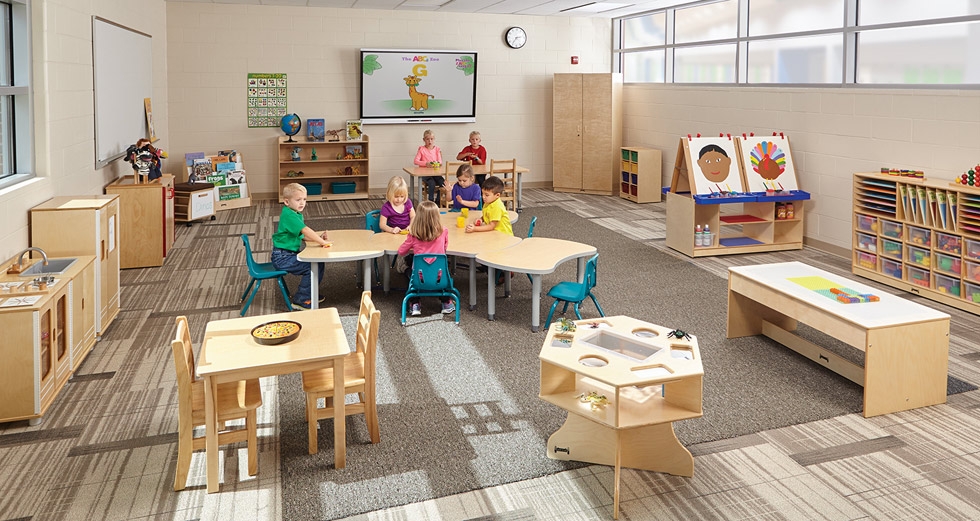Kindergarten classrooms should be designed to promote learning and engagement. Here are 10 tips to help you create a simple kindergarten classroom design that fosters a love of learning.
Encourage exploration
Create a space that encourages exploration and discovery. Include areas for sensory play, art, and block building. Make sure there are plenty of interesting materials for children to explore, and that the layout of the room encourages them to move around freely. Encourage them to ask questions and experiment with different activities. And, most importantly, make sure they feel comfortable taking risks in their learning. By creating an environment that supports exploration, you'll be setting your students up for success in kindergarten and beyond.
Promote hands-on learning
Studies show that hands-on learning is more effective than passive learning. Make sure your classroom includes materials that allow for hands-on exploration and experimentation. Some examples of activities that promote hands-on learning include arts and crafts projects, science experiments, cooking or baking recipes, puzzles or games, and outdoor play. All of these activities provide opportunities for children to use their senses (sight, touch, smell, taste, hearing) to explore the world around them. In addition, they also allow children to use their problem-solving skills as they figure out how to complete the task at hand.
Use flexible seating
Traditional desks and chairs can be restrictive and uncomfortable for young children. Offer a variety of seating options such as floor cushions, bean bag chairs, and stability balls. Flexible seating is a great way to promote learning in a kindergarten classroom. By allowing students to choose where they sit, they are more likely to be engaged and focused on their work.
Make it bright and inviting
When designing a kindergarten classroom, it is important to make it bright and inviting. This will help encourage the students to want to learn. Use bright colors on the walls and try to avoid using fluorescent lighting. Use cheerful colors and interesting patterns to create a warm and inviting space. Avoid using too much clutter or busyness as it can be overwhelming for young children.
Incorporate nature
When incorporating nature into the design of a kindergarten classroom, there are many factors to consider in order to create an effective learning environment. The amount of natural light, plants, and other elements can all play a role in how well students learn and retain information. Bring the outdoors inside by incorporating plants and nature-themed décor. Studies show that being in nature can help reduce stress and promote well-being.
Provide ample storage
Make sure there is plenty of storage for all of the materials and supplies you will need. Include both open and closed storage options to help keep the space organized.
Encourage movement
Enable children to move freely around the classroom by providing wide-open spaces. Incorporate movement activities into the daily routine to help kids stay active and engaged.
Plan for quiet time
Make sure there is a designated area for quiet activities and downtime. This will provide a welcome respite for children who need a break from the hustle and bustle of the classroom.
Create an engaging environment
Use a variety of materials and resources to create an engaging environment that captures children’s interests. Incorporate technology, such as interactive whiteboards, to add another level of engagement.
Foster a sense of community
Help children feel like they are part of a community by creating opportunities for cooperation and collaboration. Encourage children to help care for the classroom and participate in group activities.


